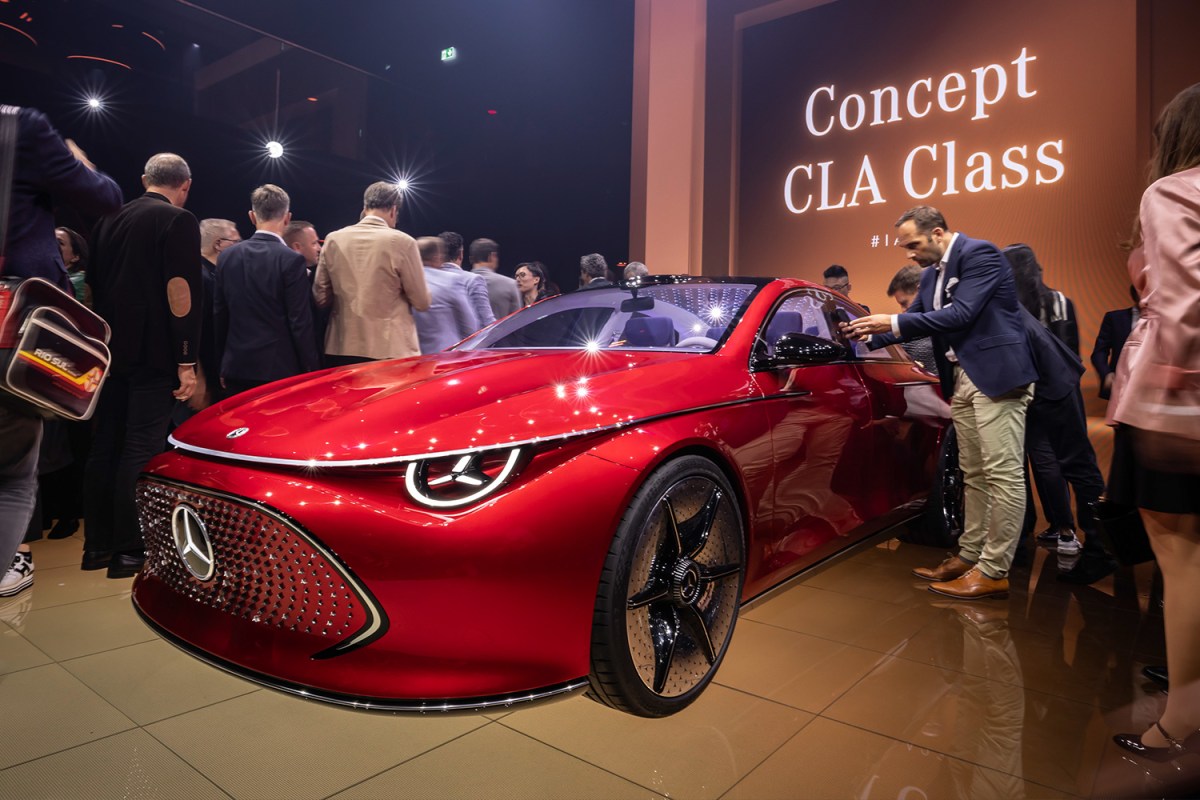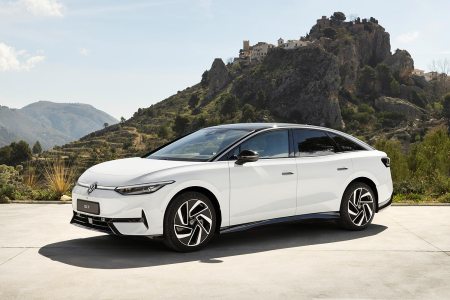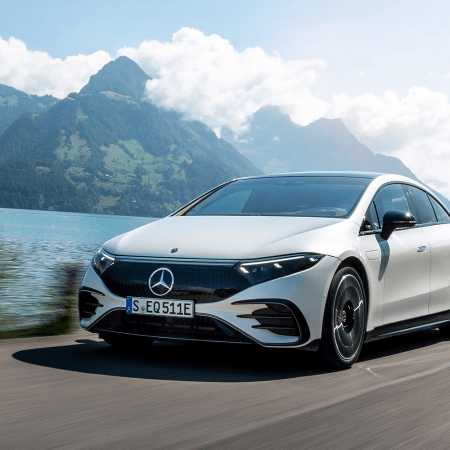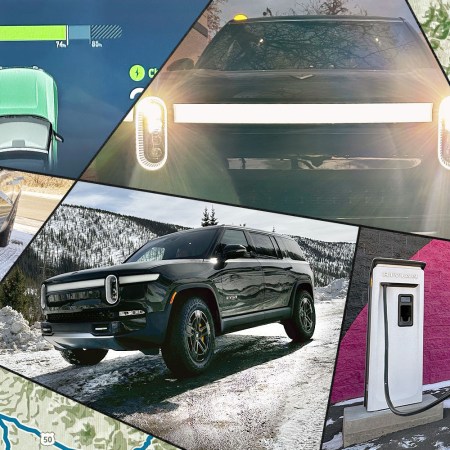At first blush, the Mercedes-Benz Concept CLA Class that just debuted at the IAA Mobility Show in Munich appears to tick all the right boxes. Futuristic styling? Check. Imaginative design details? The devil’s in there. EV power? Duh. But zoom out, and something about the flashy red four-door doesn’t quite track — probably because nobody seems to be buying sedans these days. Why would Mercedes-Benz feature their latest and greatest tech in a body style that’s not exactly thriving?
The Concept CLA Class boasts some impressive new hardware, including a lightweight battery that’s capable of 466 miles of range and 800-volt architecture that enables it to gain 248 miles of range in only 15 minutes of DC fast charging. Like any brand facing today’s fiercely competitive market, innovations like these are a critical part of the carmaker’s product strategy. But to understand the baffling decision to build a dazzling show car in a segment that’s all but kaput, the global market must be considered.
“Sedans and hatchbacks remain more popular in Europe than they do in North America, where two-thirds or more of new cars sold are actually light-duty trucks,” says John Voelcker, who has covered EVs for 15 years for outlets like Car and Driver. He adds, “It’s clear European makers largely plan to replicate their existing lineups of gasoline vehicles with EV equivalents; the electric CLA concept suggests today’s gasoline (and diesel) entry Mercedes sedan will be replaced by a vehicle of roughly the same size that happens to be an EV.”
This may be more than a case of Eurocentricity, though. Based on the positive reactions in-person and online, the concept’s provocative looks and promising tech appear to have achieved the goal of turning heads and sparking conversation, and perhaps more crucially offering a counteroffensive to Tesla’s strong-selling Model 3 and Model Y, even in the increasingly sedan-free U.S.
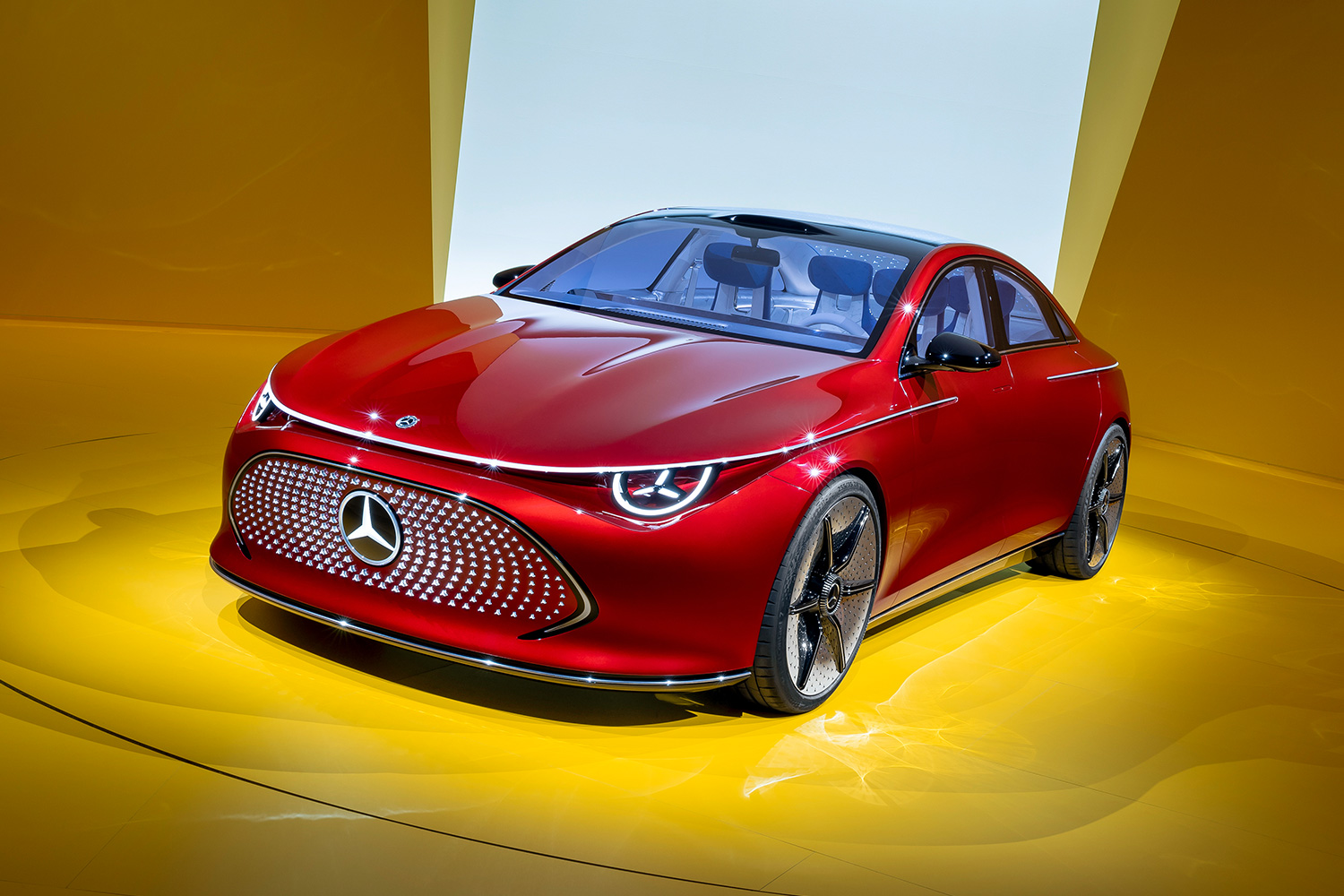
The Medium Is the Message
Mercedes-Benz’s unexpected show car naturally makes more sense from a European market perspective. But it also recalls the big ideas of Marshall McLuhan, one of the most influential communication theorists of contemporary history. “The medium is the message” suggests that the vehicle, so to speak, for communication is more important than the semantics of the message itself. In automotive terms, while the hardware and software particulars of a car are important, the packaging around it and what makes it visually and experientially different are arguably more crucial.
Does the groundbreaking battery within the Concept CLA’s underpan even show? All we can see at the moment is shiny sheet metal and a starship-like interior, not the killer apps that lie beneath (though a visible computer CPU is on display below the dashboard, highlighting the carmaker’s new MB.OS operating system). But the fact that this concept is a sedan speaks more to what it’s not: a crossover or an SUV.
Can Electric Vehicles Save the Sedan?
As Volkswagen’s new ID.7 reiterates, smaller is better in electric mobilityHow to Make a Show Car Stand Out
Crossovers and SUVs dominate the North American car market. The genre constitutes around 80% of new car sales, while sedans continue to slide into irrelevance. That means there are more lumbering sport utes filling roads, showrooms and elementary school dropoff lines than ever. For better or worse, that so-called utility is invariably burdened with visual fatigue, making it harder to stand out from the high-riding crowd.
If we rewind back to the salad days of midcentury auto shows, they were monumental because they were defined by shock and awe concept cars. Starting in the 1950s and leading into the 1970s, imaginative finned machines, bogglingly cool turbine cars and impossible wedge supercars pushed the limits of what Detroit, Stuttgart and Turin defined as transportation. These concepts were, by definition, a free-spirited exploration that could trigger a whimsical “what if” conversation. The financial and human cost of building wild four-wheeled sculptures to wow show car crowds was justified by sucking potential buyers into the customer funnel. Show on Sunday, sell on Monday.
Consider the most notable EVs of the 21st century, and you’ll see a consistent trend: vehicles that leverage an unplundered market tend to carve out a niche for themselves and survive. Tesla’s first offering was an impractical but conversation-sparking two-seat roadster; Rivian made its mark by offering the first-ever serially produced EV pickup truck; and Lucid crashed Tesla’s party by eclipsing the long-in-the-tooth Model S with a sedan that offered four-figure horsepower and novel packaging including a floating dashboard and a windscreen merged seamlessly into a glass roof.
These debuts made an impression because they offered something consumers didn’t know they needed. Well, think want, not need — bringing us back to Mercedes-Benz’s smaller CLA, which rounds out the midsize EQE and full-sized EQS, and goes head-to-head against Tesla’s Model 3. It’s a flashy, showy entry-level sedan with huge electrified bonafides. Not something you see every day in 2023.
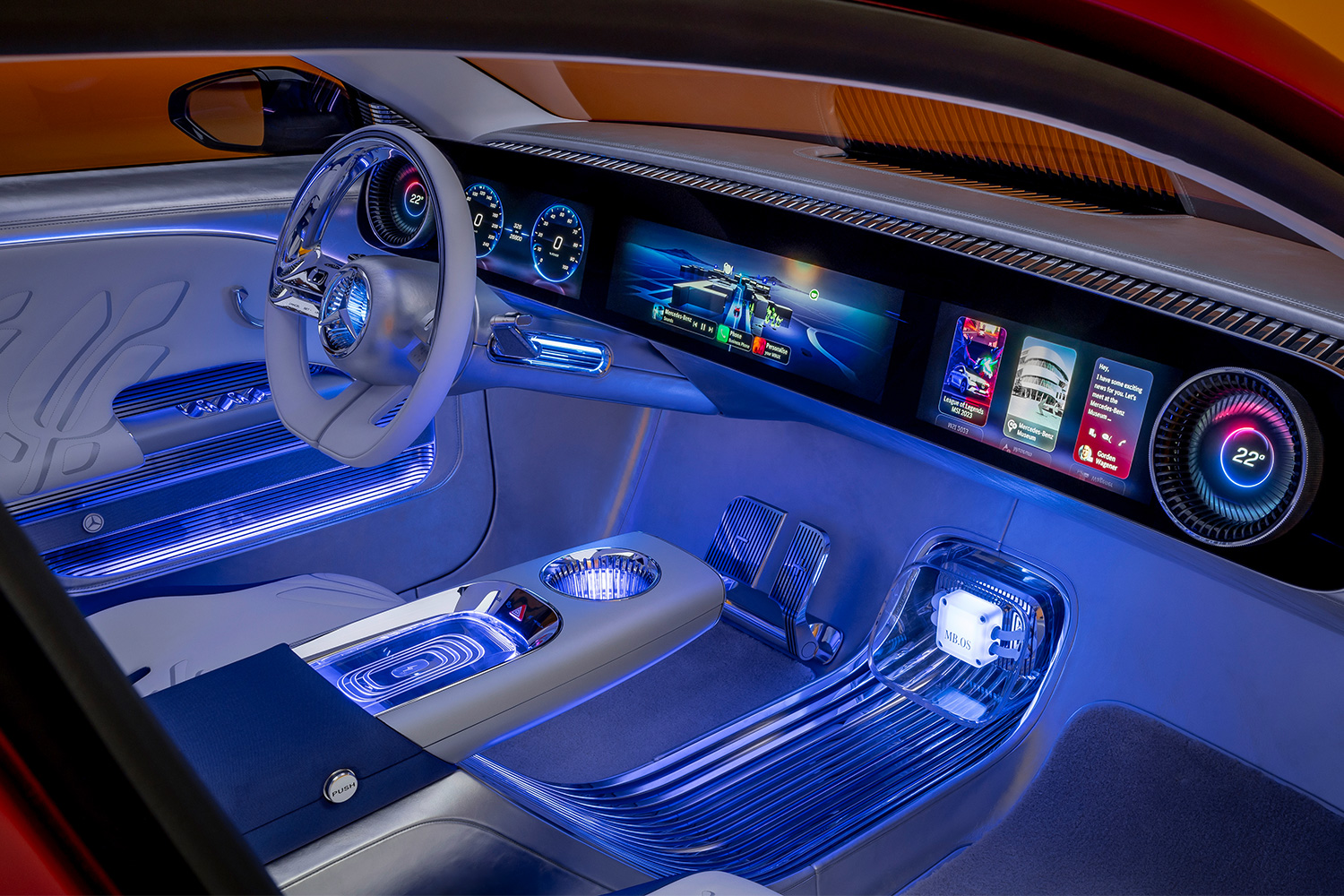
Electric Upgrades
Whether show cars of the past eventually made it to production was often beside the point; the auto industry has always relied on up front flash. Which, in a strange way, is what’s happening with the Mercedes concept that dropped in Munich.
When the Concept CLA’s advanced silicon-oxide battery actually reaches production in late 2024, it might not debut in a sedan, despite this initial preview. The compact four-door is part of the new Mercedes-Benz Modular Architecture (MMA) platform’s four-vehicle strategy which includes a subcompact crossover a la the GLA, a compact crossover like the GLB and a shooting brake. But introducing the technology in a sedan concept might lure enthusiasts who are drawn to the genre’s sharper driving dynamics, which are superior to those of crossovers and SUVs. Or it might simply be an effective way to cut through the white noise of competitors focused on those larger vehicles.
Adding to the CLA’s cachet is bi-directional charging, which enables power to be returned to the grid, and the ability to power a home or other EVs. The feature is currently offered on only a handful of EV models, including the Ford Lightning F-150, but crucially not any Tesla models (though they’ve said that’s coming in the future). Mercedes is also touting a drive unit that was developed in-house, and features a high-density battery with silicon-oxide anode tech. Using adhesives rather than screws, the battery is lighter and stiffer than usual, enabling better crash safety. Aiding efficiency are structural components which use so-called bionic casting, gaining strength by mimicking shapes found in nature.
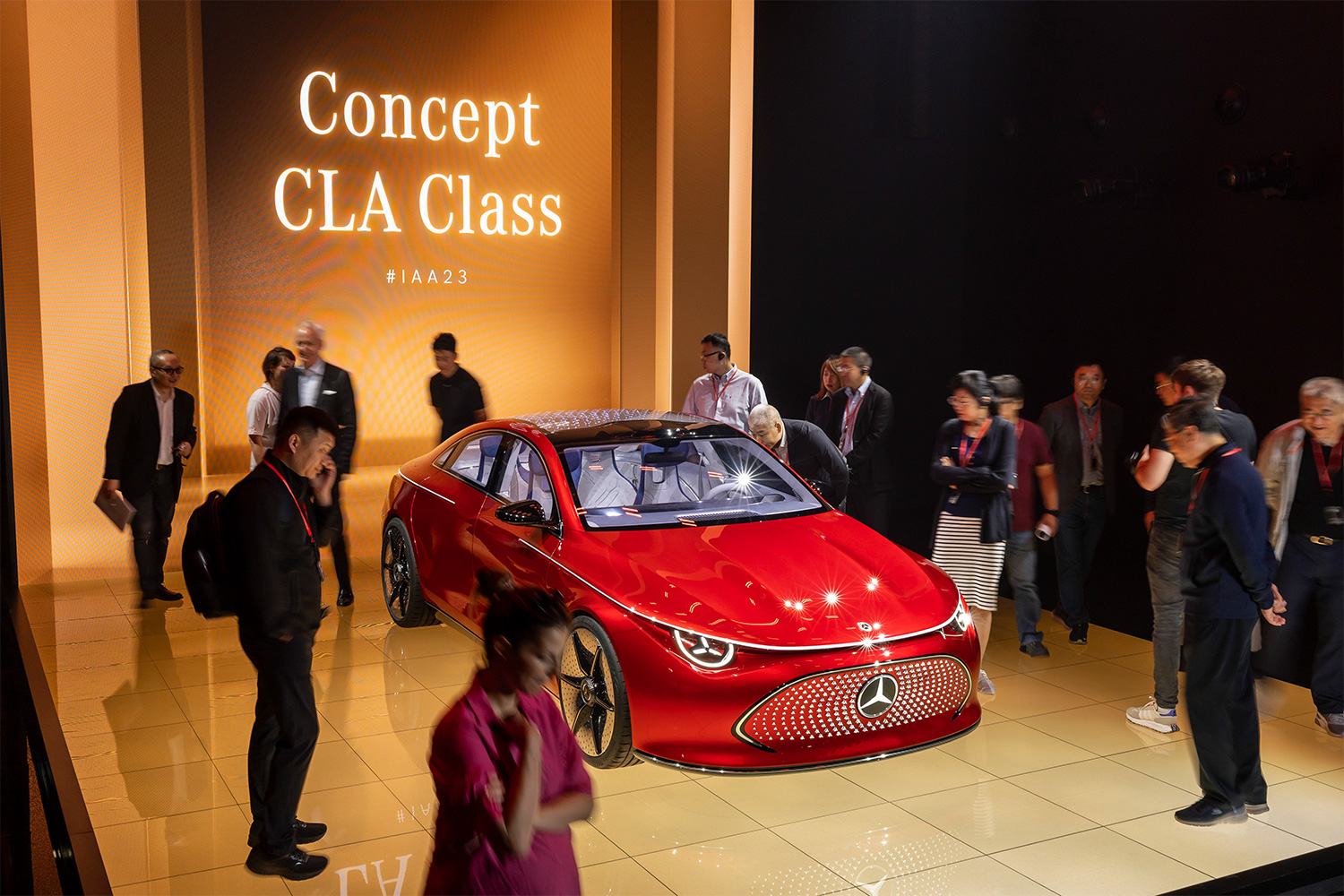
Ready for the Future
The Stuttgart carmaker hasn’t yet revealed which of four models — a wagon, compact SUV, midsize SUV or sedan — will bow first in production form. But it’s notable that the iteration Mercedes-Benz chose to represent the new MMA platform is the four-door sedan, a genre that typically undersells SUVs and crossovers by a vast margin. “Remember,” urges Voelcker, “that the new CLA concept isn’t the first electric Mercedes-Benz that’s a sedan: You can buy an EQS or EQE electric sedan in the States, as well as their electric SUV counterparts.” The sedan, it seems, is cool again.
Given the Model 3’s remarkable success (and how the Model Y picked up that thread), the Concept CLA appears to be aimed straight at the heart of Tesla, not to mention the scores of competitors who are catching up in the EV game. How it all goes down starting in late 2024 should be an automotive battle for the ages.
This article was featured in the InsideHook newsletter. Sign up now.
